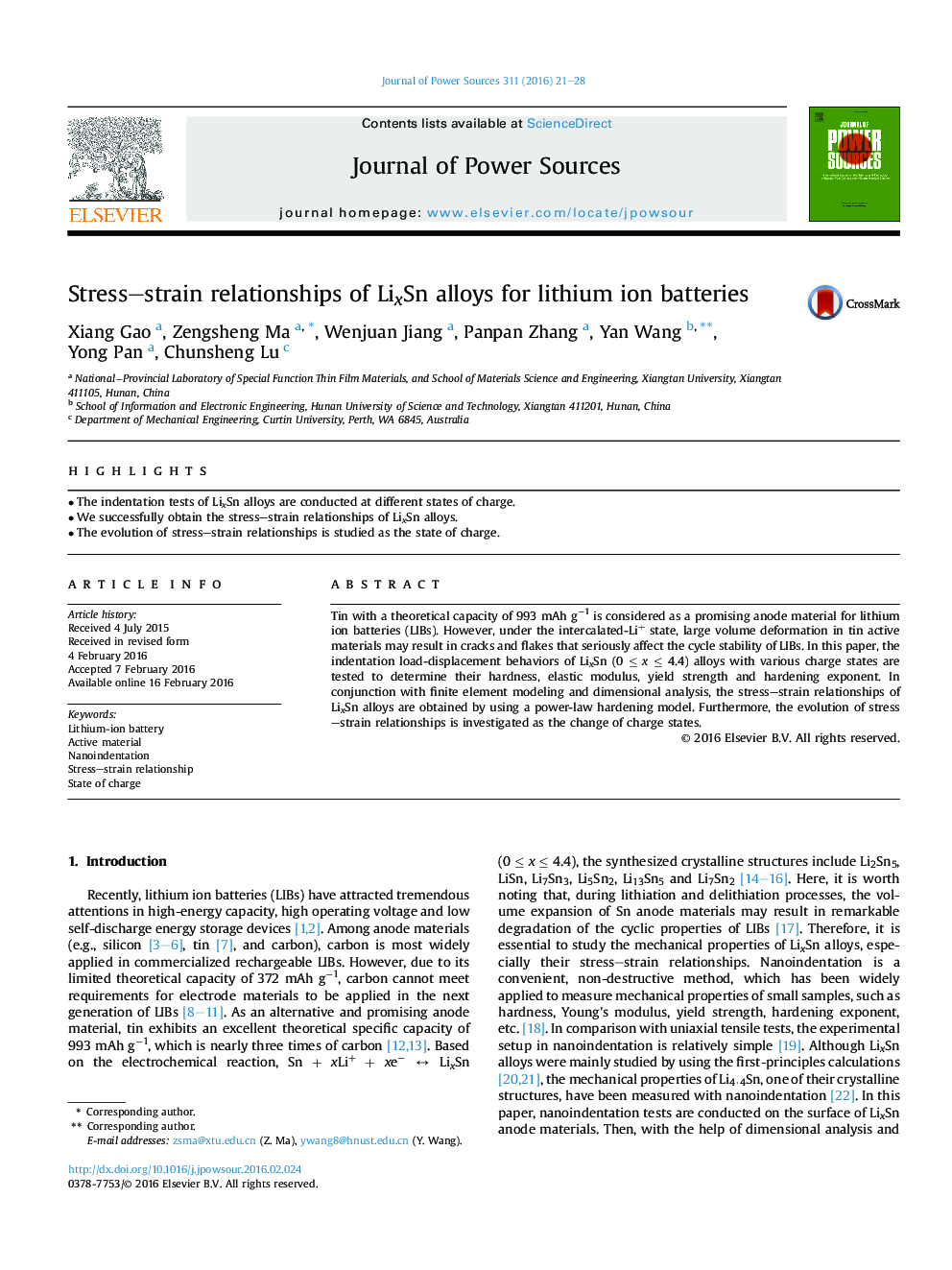| Article ID | Journal | Published Year | Pages | File Type |
|---|---|---|---|---|
| 1283711 | Journal of Power Sources | 2016 | 8 Pages |
•The indentation tests of LixSn alloys are conducted at different states of charge.•We successfully obtain the stress–strain relationships of LixSn alloys.•The evolution of stress–strain relationships is studied as the state of charge.
Tin with a theoretical capacity of 993 mAh g−1 is considered as a promising anode material for lithium ion batteries (LIBs). However, under the intercalated-Li+ state, large volume deformation in tin active materials may result in cracks and flakes that seriously affect the cycle stability of LIBs. In this paper, the indentation load-displacement behaviors of LixSn (0 ≤ x ≤ 4.4) alloys with various charge states are tested to determine their hardness, elastic modulus, yield strength and hardening exponent. In conjunction with finite element modeling and dimensional analysis, the stress–strain relationships of LixSn alloys are obtained by using a power-law hardening model. Furthermore, the evolution of stress–strain relationships is investigated as the change of charge states.
